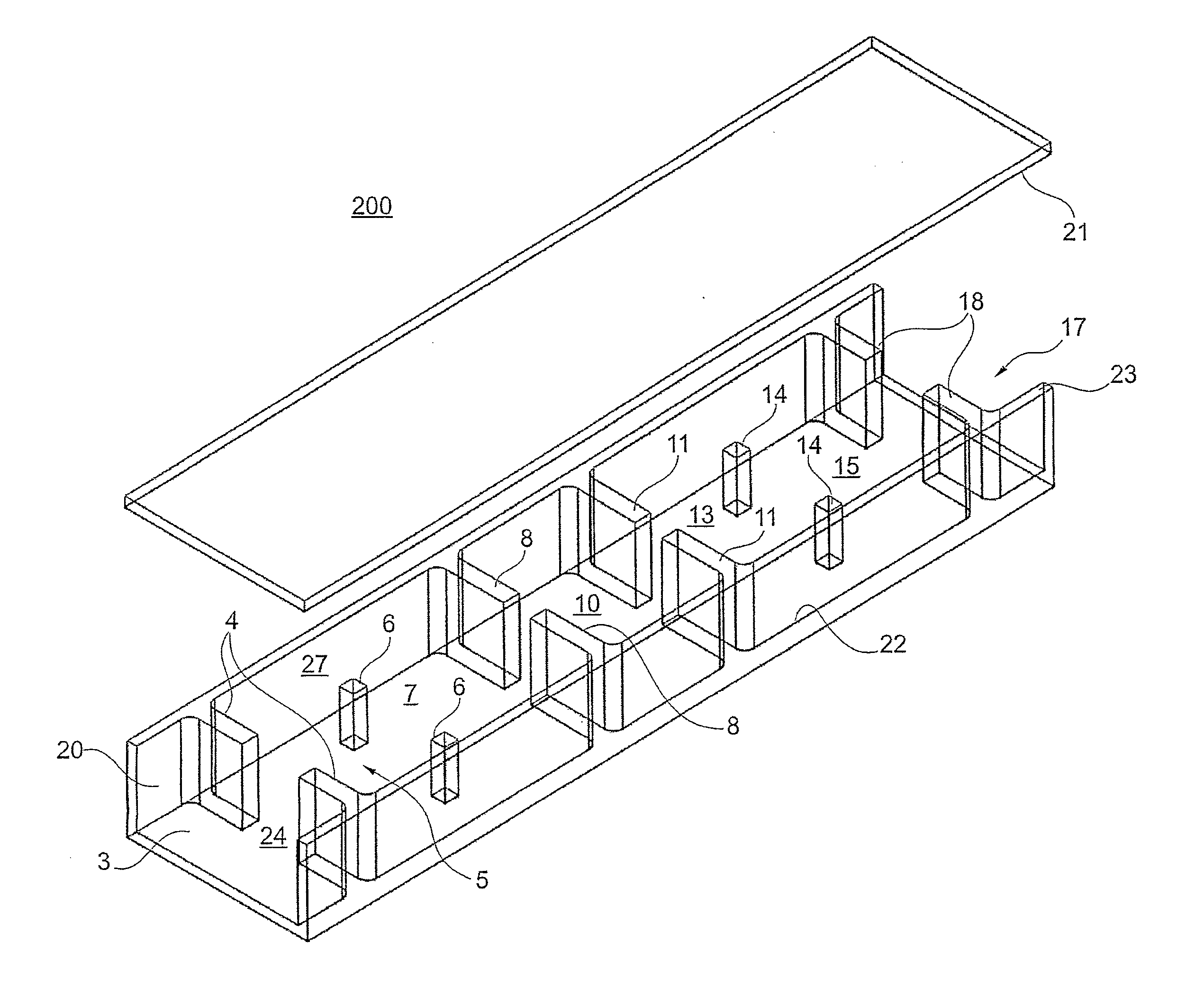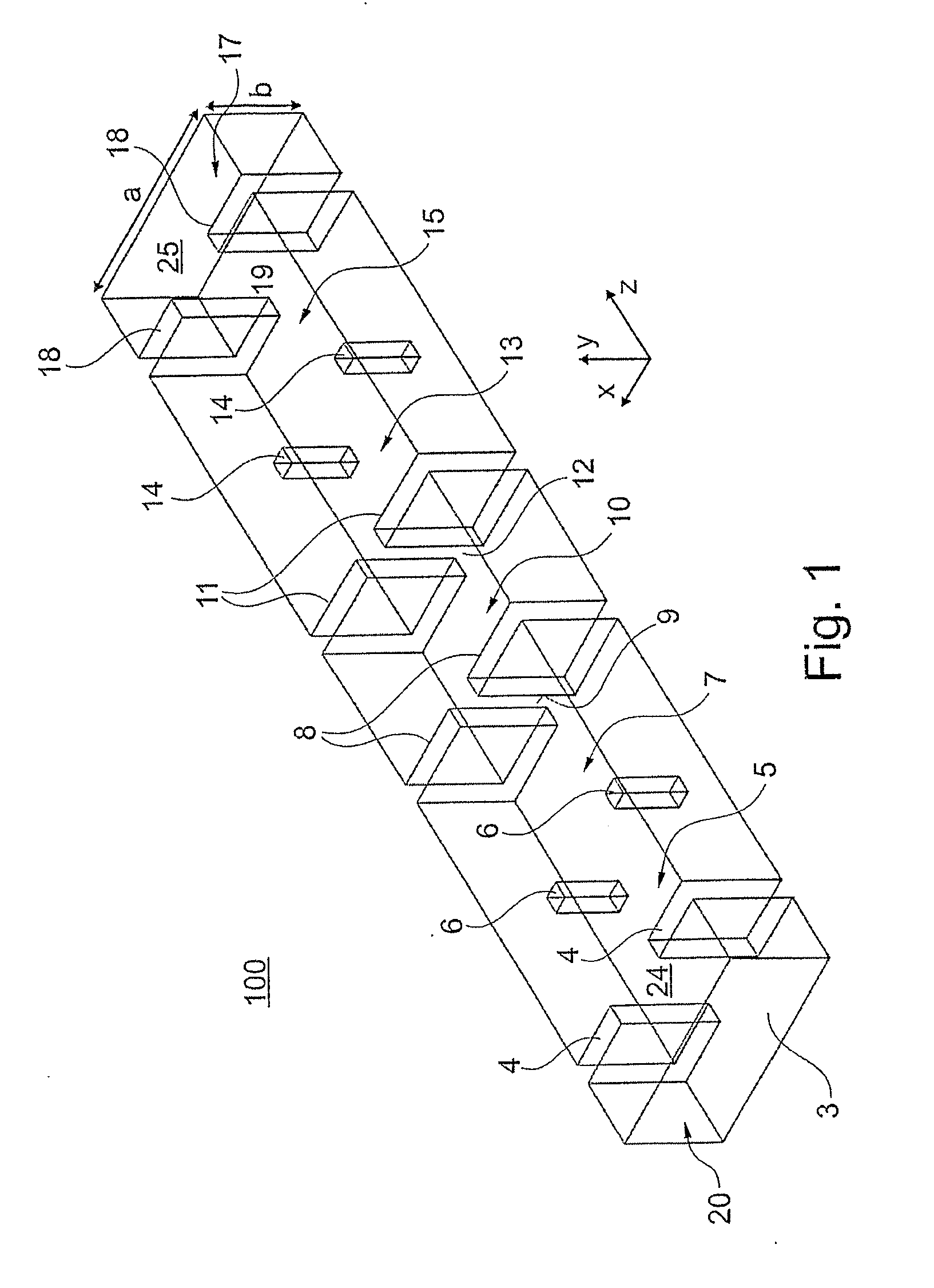Waveguide band-pass filter with pseudo-elliptic response
a band-pass filter and waveguide technology, applied in the field of waveguides, can solve the problems of not offering any solutions in the prior art, and achieve the effects of compact overall dimensions, good selectivity performance, and convenient manufacturing
- Summary
- Abstract
- Description
- Claims
- Application Information
AI Technical Summary
Benefits of technology
Problems solved by technology
Method used
Image
Examples
first embodiment
[0032]The first inductive discontinuity coupling device 4 can be made, by means of an iris or inductive diaphragm comprising two metal septums (also referred to by reference numerals 4) arranged symmetrically in respect to a median longitudinal plane, which develops parallel to an axis z of the radiation propagation. The metal septums 4 of the first inductive diaphragm identify a first coupling radiation opening 24 of the electromagnetic field.
[0033]With reference to the equivalent electric scheme of FIG. 2, the first inductive diaphragm 4 is represented as an optimal shunt inductor having an inductive impedance jX4. The walls of the first inductive diaphragm 4 have the same height as the height b of filter 100.
[0034]The first resonator segment of the waveguide 5 has a length, taken on the axis z, approximately equal to half of length of the central wave of the filter: λg0 / 2 and it is coupled to the input 3 by the inductive diaphragm 4. The resonator segment 5 can also have a lengt...
embodiment 400
[0089]FIG. 14 refers to an embodiment 400 of the band-pass filter 100, which may be implemented by processing the low-loss dielectric slug, and suitable for the guided propagation of electromagnetic waves, obtaining hollow geometrical shapes which reproduce as a negative both the shape of the inductive coupling devices such as the diaphragms 4, 8, 11 and 18 and the resonant coupling devices (such as the two posts 6).
[0090]These cavities obtained in the dielectric slug are then coated with a metal material by a metallization step, which enables to obtain the four external walls of the waveguide of the dielectric filter 400. In particular, the dielectric-type filter 400 of FIG. 14 is a four-resonator band-pass filter with a transmission zero. For the sake of clarity of the depiction in FIG. 14, they are not shown.
[0091]FIG. 15 shows the behaviours of the reflectance S11 and transmittance S21 obtained by a numerical simulation with reference to an example of the dielectric filter 400 o...
PUM
 Login to view more
Login to view more Abstract
Description
Claims
Application Information
 Login to view more
Login to view more - R&D Engineer
- R&D Manager
- IP Professional
- Industry Leading Data Capabilities
- Powerful AI technology
- Patent DNA Extraction
Browse by: Latest US Patents, China's latest patents, Technical Efficacy Thesaurus, Application Domain, Technology Topic.
© 2024 PatSnap. All rights reserved.Legal|Privacy policy|Modern Slavery Act Transparency Statement|Sitemap



